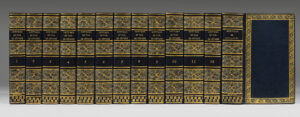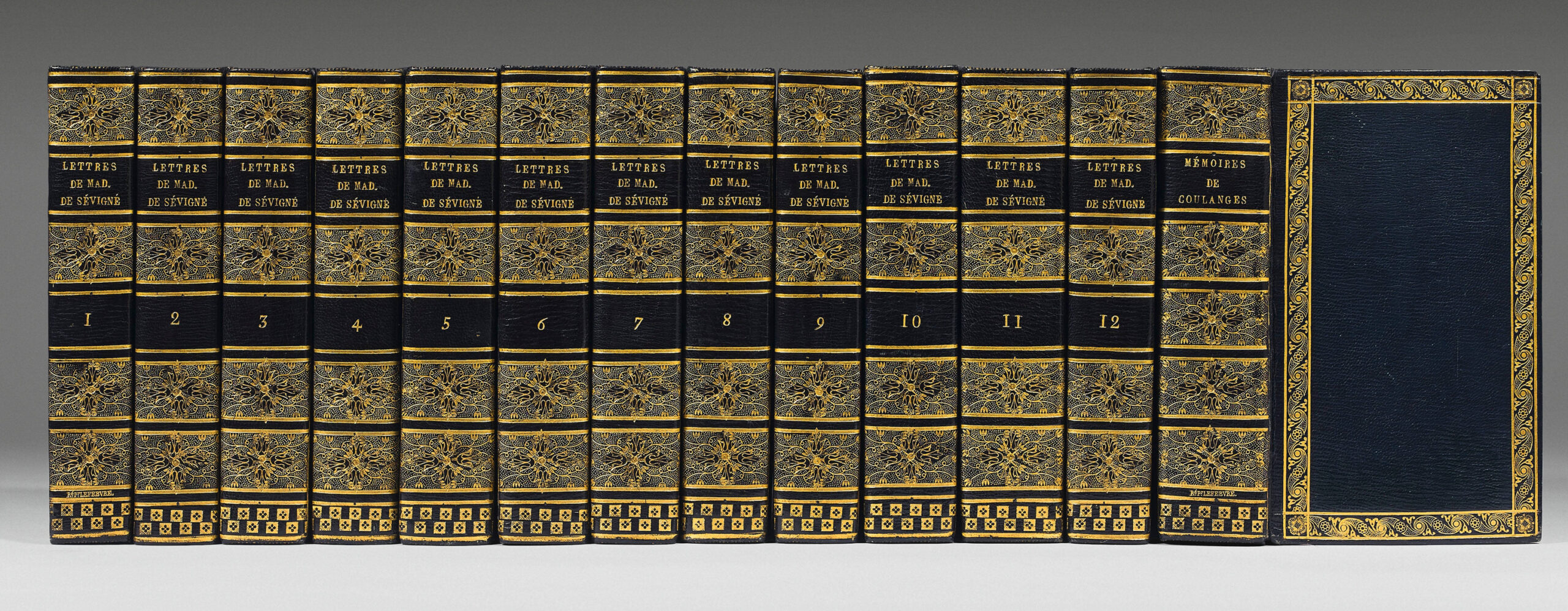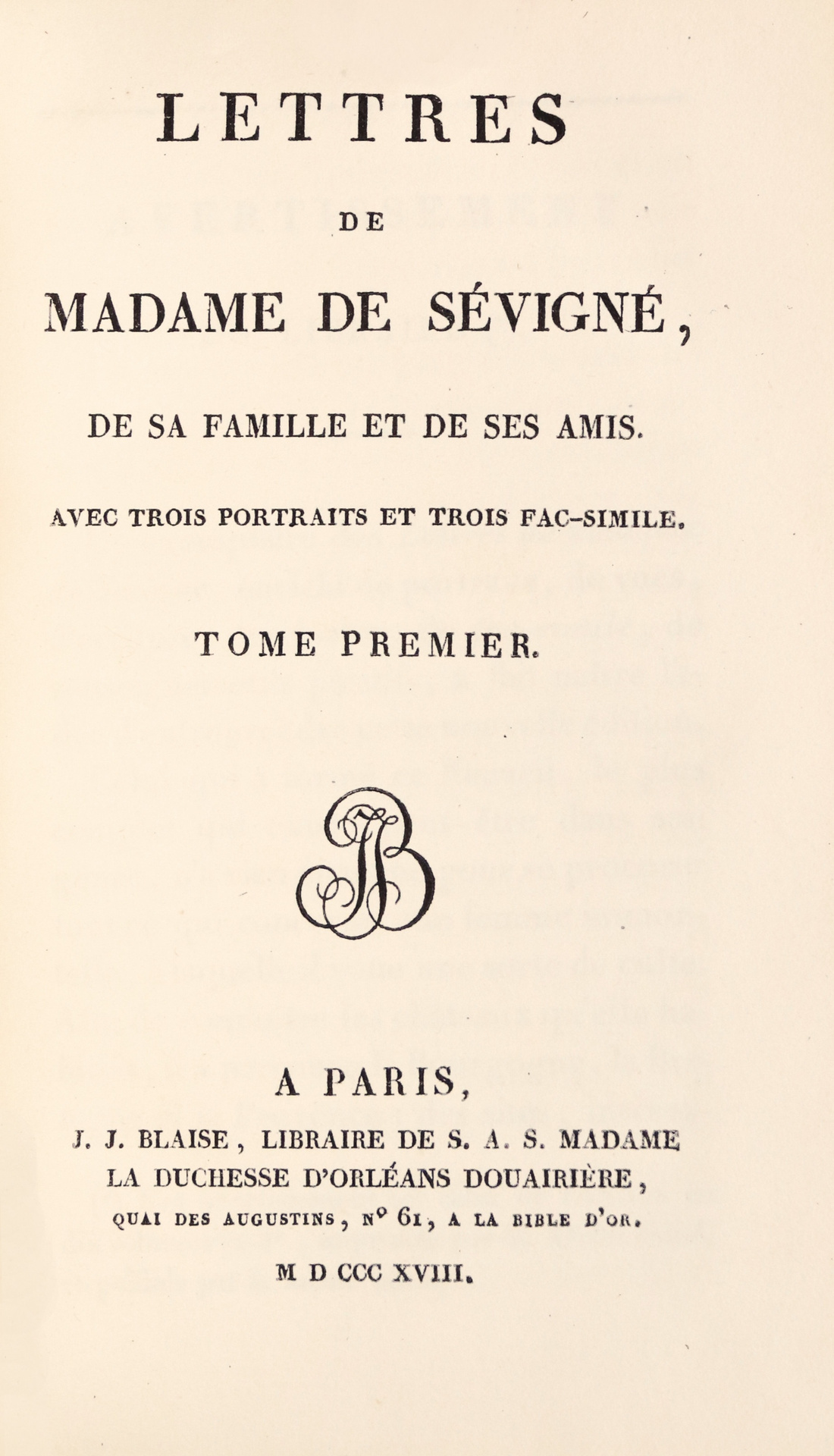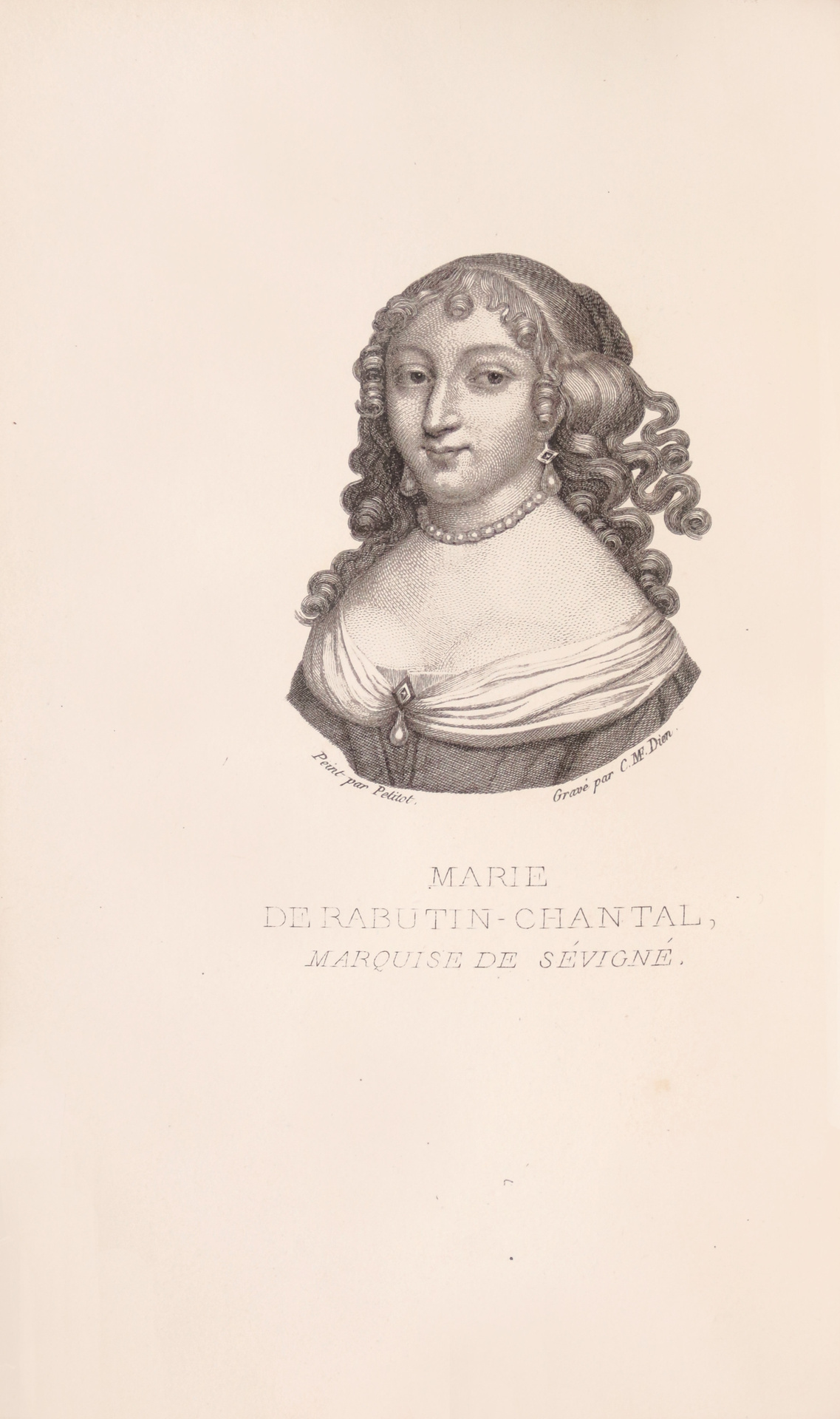Paris, J.J. Blaise, Libraire de S.A.S. Madame la Duchesse d’Orléans, 1818.
12 volumes.
– Mémoires de M. de Coulanges, suivis de Lettres inédites de Madame de Sévigné, de son fils, de l’abbé de Coulanges, d’Arnauld-d’Andilly, d’Arnauld de Pomponne, de Jên de La Fontaine…
Paris, J.J. Blaise, Libraire de S.A.S. Madame la Duchesse d’Orléans, 1820.
1 volume.
13 volumes 12mo [162 x 98 mm], blue straight-grained morocco, bêded border with fillets around the covers, flat spines decorated with a gilt riddled decoration, gilt checquered design on the foot, inner gilt border, purple watered silk doublures and endlêves, gilt edges. Rich contemporary binding signed Lefebvre.
Precious original collective edition in 12mo format of “Lettres de Madame de Sévigné”. First critical edition of the Lettres de Madame de Sévigné, established by Louis-Jên-Nicolas Monmerque (1780-1860). Published in 1818, in 10 volumes 8vo, by J.J. Blaise, the latter also published the same yêr this edition in 12 volumes 12mo. The Mémoires of M. de Coulanges were published simultaneously in 1820 in both formats. Tchemerzine grêtly praises the first critical edition of Monmerqué printed in 1818. “The most complete and best editions of Mme de Sévigné are from the 19th century. The first critical edition is that of Monmerqué [Paris, Impr. De P. Didot l’aîné: J.J. Blaise, 1818-1819, 10 vol. 8vo]; it contains nêrly one hundred unpublished letters and more than three hundred also unpublished fragments.” (Tchemerzine, V, 829). “The Monmerque edition of 1818 is the best we ever had of this immortal correspondence (it is illustrated with 4 portraits, 6 facsimile and a plate of coins). It is appropriate to gather together this edition and the volume entitled: Memoires de M. De Coulanges; suivis de Lettres inédites de Mme de Sévigné, de son fils, de l’abbé de Coulanges… Paris, Blaise, 1820, 8vo”. Brunet. These two volumes are here reunited. “M. de Monmerqué made the public enjoy the rêl text of Madame de Sévigné, by an edition augmented with ninety-four unpublished Letters, two hundred and forty-six Letters to which he restored equally unpublished passages, and two hundred fifty-six Letters, which had not been assembled in the collection, or in which passages printed in 1726 had been restored, in 1734, but then cut off again by considerations which no longer exist. By conferring the various original editions, by meditating on the memories of time, he restored a multitude of omitted or altered passages, and he resolved countless difficulties. The advantages of such a precious work are developed by the publisher in a bibliographic notice; and Mr. de Saint-Surin has attached to it a very extended notice on Madame de Sévigné, on her family and friends. This edition is the result of so many resêrches, that it can be considered as the source from which all those who reprint the Lettres of our inimitable epistolary draw from with more or less freedom.” The last volume is finished with an analytic and alphabetic table. Few luxurious copies were printed on vellum paper. Magnificent copy, undoubtedly one of the most bêutiful known, covered with dazzling contemporary morocco bindings signed by Lefebvre, complete with the Mémoires de Coulanges. Nephew by marriage of Jên-Claude Bozérian, Lefebvre worked for a while with his uncle, before resuming his workshop when he retired around 1810. He worked until around 1831. The ornamental vocabulary used here is of grêt refinement, particularly with the gilt checquered design stamped at the bottom of êch volume. Exhibition: Culot (P.), Relieurs et reliures décorées en France aux époques Directoire et Empire, Bibliotheca Wittockiana, 16 sept. 2000 - 10 febr. 2001, Brussels, n°85, with reproduction.
See less information




